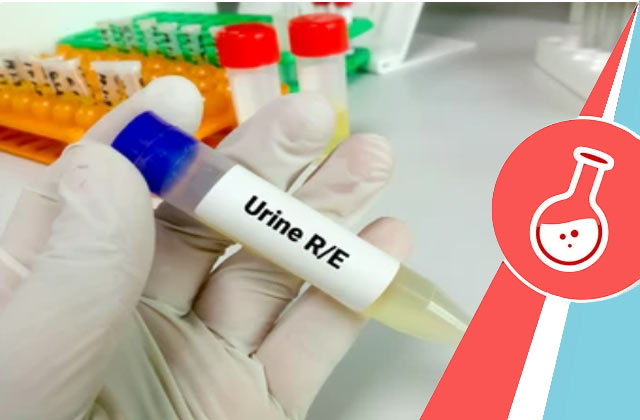Learn everything about urine analysis test before you book lab test online. Understand the why, how, and what of this test.
What Does Complete Urine Analysis Include?
A routine urinalysis test checks:
Visual examination - The colour and appearance of the urine is analysed during the urine examination to understand the presence or potential risk of an underlying health condition.
Chemical examination - Special test strips or dipsticks are used to gauge the presence and volume of chemical substances in the urine. The degree of colour change in the dipsticks is treated as the indicator of several health conditions.
The chemical aspect of urine analysis tests include several tests, such as:
- Protein urine tests - Used to gauge the level of albumin protein in the urine
- Urine pH level tests - Checks the acid-base balance of the urine
- Ketones urine tests - Checks the extent or potential risk of diabetic ketoacidosis
- Glucose urine tests - Measures the amount of sugar excreted in your urine
- Bilirubin urine tests - Checks for liver or bile duct complications
- Nitrite urine test - Checks for UTIs
- Leukocyte esterase urine tests - Checks for inflammation in your urinary tract or kidneys
- Urine specific gravity test - Gauges the concentration of all chemical particles in your urine
Microscopic examination - The urine routine and microscopy test is used to investigate cells, cell fragments, urinary casts, mucus, crystals, bacteria and germs.
Some of the common microscopic urine analysis tests include:
- RBC urine tests - Measures the volume of red blood cells in your urine
- WBC urine tests - Measures the volume of white blood cells in your urine
- Epithelial cells - Measures the volume of epithelial cells (cells that surround hollow body organs and urinary tracts)
- Bacteria, yeasts and parasites - Measures the presence of these microorganisms
- Urinary casts - measures the amount of urinary casts that are formed from proteins released by your kidneys
Opt for a comprehensive routine urine analysis to assess your potential risk of developing several health complications related to your heart, kidney and overall urinary system and other lifestyle disorders.
Why Do I Need An Urine Routine And Microscopy Test
Your healthcare provider will recommend an urine routine test or a urine microscopy test or both urine routine and microscopy tests:
- As a part of routine health screenings
- If you are exhibiting signs and symptoms of diabetes and kidney diseases
- To monitor the efficacy of ongoing treatments for diabetes and kidney complications
- To diagnose UTIs, pregnancy and other health conditions
An urine analysis normal report is also a prerequisite for an upcoming surgery or other invasive medical interventions.
How To Prepare For Urine Routine And Microscopy Test
If you are to opt for a urine routine test, here’s how you can prepare beforehand.
- Consume adequate levels of fluids to be able to produce an urine sample
- Consult with your healthcare provider to know the dos and don’ts about food and medications to avoid before an urinalysis as it may impact the test results
- During menstruation, certain vaginal discharges may interfere with your urine analysis test report, Seek your healthcare provider’s advice beforehand.
Urine Routine And Microscopy Test Procedure
The urine analysis test procedure is fairly simple. You will be asked to produce a clean catch urine sample, probably the first void in the morning for the visual, chemical and microscopic analysis. If you are hospitalised or are unable to move around, the urine sample will be collected through a catheter. Once you receive the routine urine examination test results, do consult with your healthcare provider for necessary preventive/treatment interventions.

























